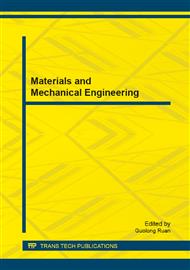p.210
p.217
p.222
p.232
p.237
p.247
p.258
p.264
p.272
High-Speed CNC Grinding Process Optimization of Non-Circular Rotary Parts Based on Particle Swarm Optimization
Abstract:
As for the high-speed CNC grinding process for non-circular rotary parts with a large rate of lift change (such as camshaft of automotive engine), the acceleration of grinding wheel often has a direct impact on the contour grinding precision of the workpiece due to the large acceleration of movement between of the workpiece and the grinding wheel produced from CNC grinding interpolation. Researches show that solving this problem is an important way to improve the precision of high-speed CNC grinding for non-circular rotary parts. In this paper, a high-speed CNC grinding process control and optimization method is presented for non-circular rotary parts based on acceleration interpolation movement. The negative influence of the problem about high acceleration can be reduced effectively and the precision of high-speed CNC grinding for non-circular rotary parts can be improved greatly by the proposed method. Additionally, the simulation shows that the optimization of grinding parameters forgrinding process has a good performance.
Info:
Periodical:
Pages:
237-246
Citation:
Online since:
February 2014
Authors:
Keywords:
Price:
Сopyright:
© 2014 Trans Tech Publications Ltd. All Rights Reserved
Share:
Citation:


